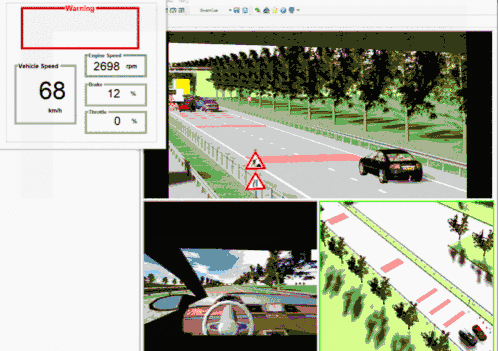Intro
Recently, I have read some books about Transport Planning and Urban Design. I find that almost all the present transport design is human-oriented, that is to say, the traffic design standards and specifications are created to serve for all the actors including drivers and pedestrians on the road in order to avoid traffic accidents.
Take the sight distance used in road design as an example, the following standards should be met in road design:
(1) SSD – Stopping Sight Distance or Absolute Minimum Sight Distance;
(2) ISD – Intermediate Sight Distance: This is twice the value of SSD;
(3) OSD – Overtaking Sight Distance.
But what if there were a technology explosion in the near future and consequently fueled autonomous vehicles with prosperity, it might pose all the existing transport specifications to a threat and even be overthrown.
Scenario
With this thought in mind, a microsimulation model is built to simulate the Active Braking Control System(ABCS) in an autonomous vehicle. In the preset scenario, the autonomous vehicle is mounted with a monochrome camera and a TIS(Radar/Laser). The road is two-way four lanes with the left lane under construction and the right lane congested. The autonomous vehicle is visually aided to identify the road signs. The car distance can be measured and calculated with the help of the TIS (Radar/Laser). The Active Braking Control would be activated according to a specific car distance to pull the autonomous vehicle over.
The whole simulation process is as follows. (Wait a moment. The gif is loading.)

The window on the left shows the warning of traffic signs, the vehicle speed, the engine speed, the percentage of braking and the throttle.
Considering the same braking performance, the difference between driverless driving and manned driving is that drivers’ response time to the emergency is not required under driverless condition. Consequently, the braking distance in an emergency is shorter under driverless condition. There are many examples like this, such as the sight distance of the crossroads, the design of vertical alignment and so on.
Based on all the above, I believe that artificial standards including but not limited to sight distance will be highly challenged in the near future. Also, the pattern of future transport standards will consider more about traffic efficiency.